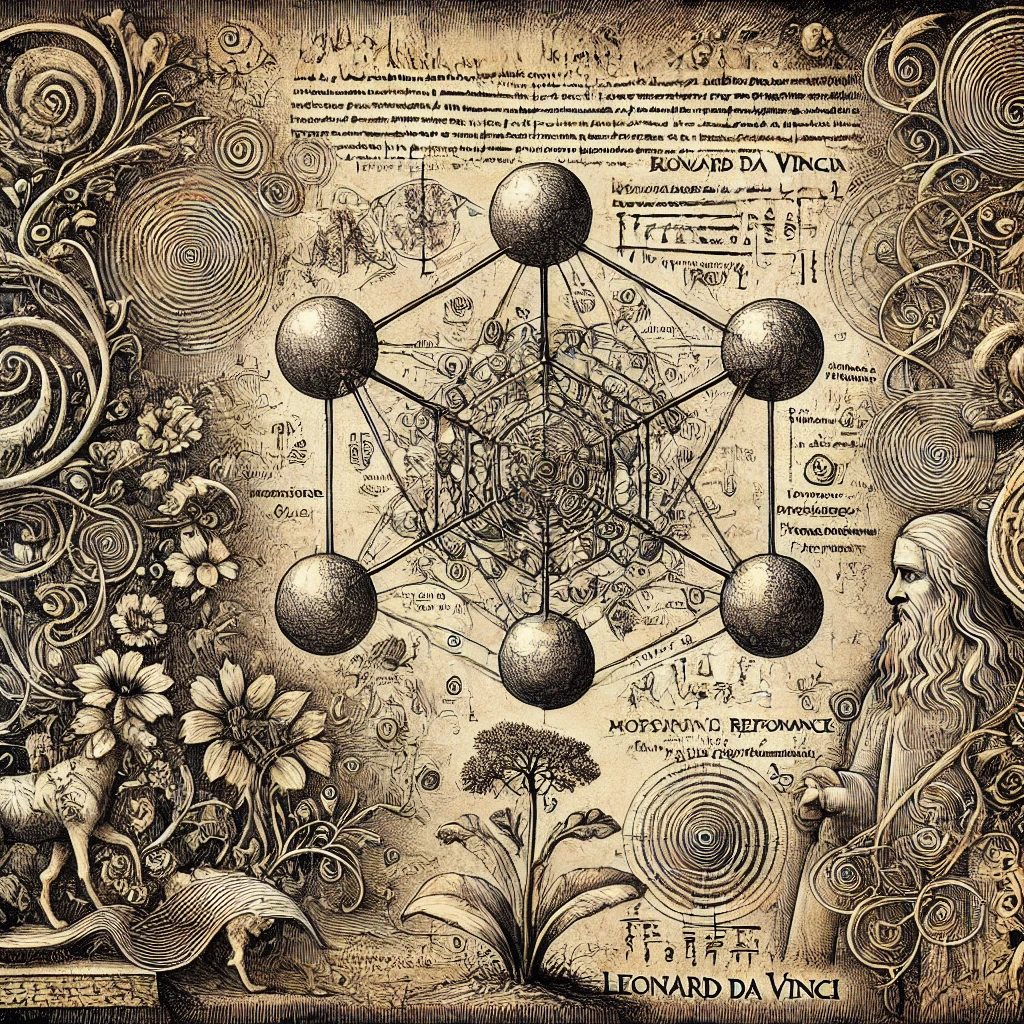
- Published on
- Authors

- Name
- ric de yuga 😄
🌿 Morphic Resonance: Nature's Hidden Memory? 🌿
In the realm of scientific inquiry, few concepts are as intriguing and controversial as Morphic Resonance Theory. Proposed by biologist Rupert Sheldrake, this theory suggests that nature has a kind of memory, where patterns of behavior and form are influenced by previous similar patterns. In this blog post, well explore the fascinating implications of this theory and its potential connections to other areas of scientific research.
🧠 The Fundamentals of Morphic Resonance 🧠
Morphic Resonance Theory posits that there exists a type of memory in nature that transcends physical boundaries and time. The key concepts include:
Morphic Fields: Invisible fields that shape the form and behavior of organisms and systems.
Resonance: The idea that similar forms and patterns can influence each other across space and time.
Collective Memory: The notion that nature retains a memory of previous forms and behaviors, making their future occurrence more likely.
📊 Observing Morphic Resonance in Nature 📊
One of the most intriguing aspects of Morphic Resonance Theory is its potential to explain certain phenomena observed in nature:
Crystallization: When new chemical compounds are first synthesized, they often take a long time to crystallize. However, subsequent crystallizations of the same compound tend to occur more rapidly, even in different laboratories around the world.
Animal Behavior: New behaviors learned by animals of a particular species seem to spread more quickly than can be explained by conventional means of communication.
Human Learning: Certain skills or knowledge appear to become easier for people to acquire over time, even when there's no direct transmission of information.
These observations suggest that once a pattern or behavior is established, it becomes easier for similar patterns or behaviors to form elsewhere, as if guided by an unseen force or memory.
🔬 The Mathematics of Morphic Fields 🔬
While Morphic Resonance Theory is largely conceptual, some attempts have been made to describe it mathematically. One approach is to model morphic fields as probability fields that influence the likelihood of certain outcomes. This could be represented as:
P(E|M) = P(E) + ΔP(M)
Where:
- P(E|M) is the probability of event E given the influence of morphic field M
- P(E) is the baseline probability of event E
- ΔP(M) is the change in probability due to the morphic field
This formulation suggests that morphic fields could subtly influence probabilities, making certain outcomes more likely without deterministically causing them.
🌌 Morphic Resonance and Quantum Field Theory: Similarities and Differences 🌌
Morphic Resonance Theory shares some intriguing parallels with Quantum Field Theory (QFT), but also has significant differences:
Similarities:
- Both theories propose the existence of fields that permeate space and influence physical phenomena.
- Both suggest a deep interconnectedness in nature that goes beyond simple cause-and-effect relationships.
- Both challenge our conventional understanding of time and causality.
Differences:
- QFT is a well-established framework in physics with mathematical rigor, while Morphic Resonance remains a more speculative concept.
- QFT deals primarily with fundamental particles and forces, while Morphic Resonance focuses on biological and behavioral patterns.
- QFT's fields are quantized and follow specific rules of quantum mechanics, while morphic fields are proposed to operate on a more macroscopic scale.
For a deeper dive into Quantum Field Theory, you can read my article on the subject here.
🌱 The Power of Collective Knowledge and Innovation 🌱
One of the most inspiring implications of Morphic Resonance Theory is its suggestion of a deep interconnectedness in nature and human knowledge. This idea resonates with many observations about innovation and learning:
"While the initial formation of structures can be challenging, trying your hardest and coming up with new ideas not only makes the process easier for yourself but also benefits others. Every innovative idea contributes to the collective knowledge and abilities of humanity. This interconnectedness means that each new discovery or invention helps to advance the capabilities of every other human being and even other beings in the universe."
This perspective encourages us to view our individual efforts as part of a larger, collective endeavor. It suggests that:
- Pioneering is Valuable: Being the first to attempt something new, while difficult, paves the way for others.
- Knowledge is Cumulative: Each discovery or innovation builds upon and contributes to a shared pool of knowledge.
- Effort Has Ripple Effects: Our individual efforts can have far-reaching consequences, potentially benefiting others in ways we may not directly observe.
🔮 Future Directions and Research 🔮
While Morphic Resonance Theory remains controversial in mainstream science, it has inspired numerous research directions and philosophical discussions:
- Consciousness Studies: Exploring potential connections between morphic fields and theories of consciousness.
- Biosemiotics: Investigating how information and meaning are conveyed in biological systems.
- Epigenetics: Studying how environmental factors can influence gene expression across generations.
- Systems Theory: Examining how complex systems exhibit emergent properties and self-organization.
🌟 Conclusion: Embracing the Mystery 🌟
Morphic Resonance Theory, whether ultimately proven or not, encourages us to look at nature and human knowledge in a new light. It reminds us of the vast mysteries that still exist in our understanding of the universe and challenges us to think beyond conventional boundaries.
As we continue to explore and innovate, we can draw inspiration from the idea that our efforts contribute to a larger whole. Each new idea, each attempt to push the boundaries of knowledge, may be resonating through the fabric of nature itself, making future discoveries and innovations just a little bit easier for all of humanity.
Whether through morphic fields or other mechanisms yet to be discovered, the interconnectedness of knowledge and the cumulative nature of human progress remain powerful ideas that can motivate us to keep exploring, innovating, and sharing our discoveries with the world.
